The last zoo I visited to document was the Jacksonville Zoo in Florida this past April. One of the highlights of the zoo to me was the siamang exhibit, not only because of what I saw, but also because of what I heard. I saw an individual who was desperate for freedom and I heard numerous children and adults remark about how the monkey looked sad. Their hand clasped the double caging that represented the edge of their world and their dejected eyes peered forward towards, or perhaps beyond, the space where humans come to gawk at them 7 days a week, excluding Christmas and Thanksgiving day.
According to the educational sign in front of the siamang display this species should be living in mountain forests and tropical rain forests. Clearly they can’t come close to thriving in what kind of experience zoos can afford them.
The above two photos of the siamang look eerily similar to some primate photos I took during my first time documenting a zoo, which was almost a decade ago in Austin, TX at the Austin Zoo. The Austin Zoo claims to be a rescue, but I don’t see it as such because many of the animals appear to have been taken out of one agonizing situation and placed into a new agonizing situation. For example, I believe the individual below was taken away from being used in animal experimentation and was dumped into a cage at a zoo instead.

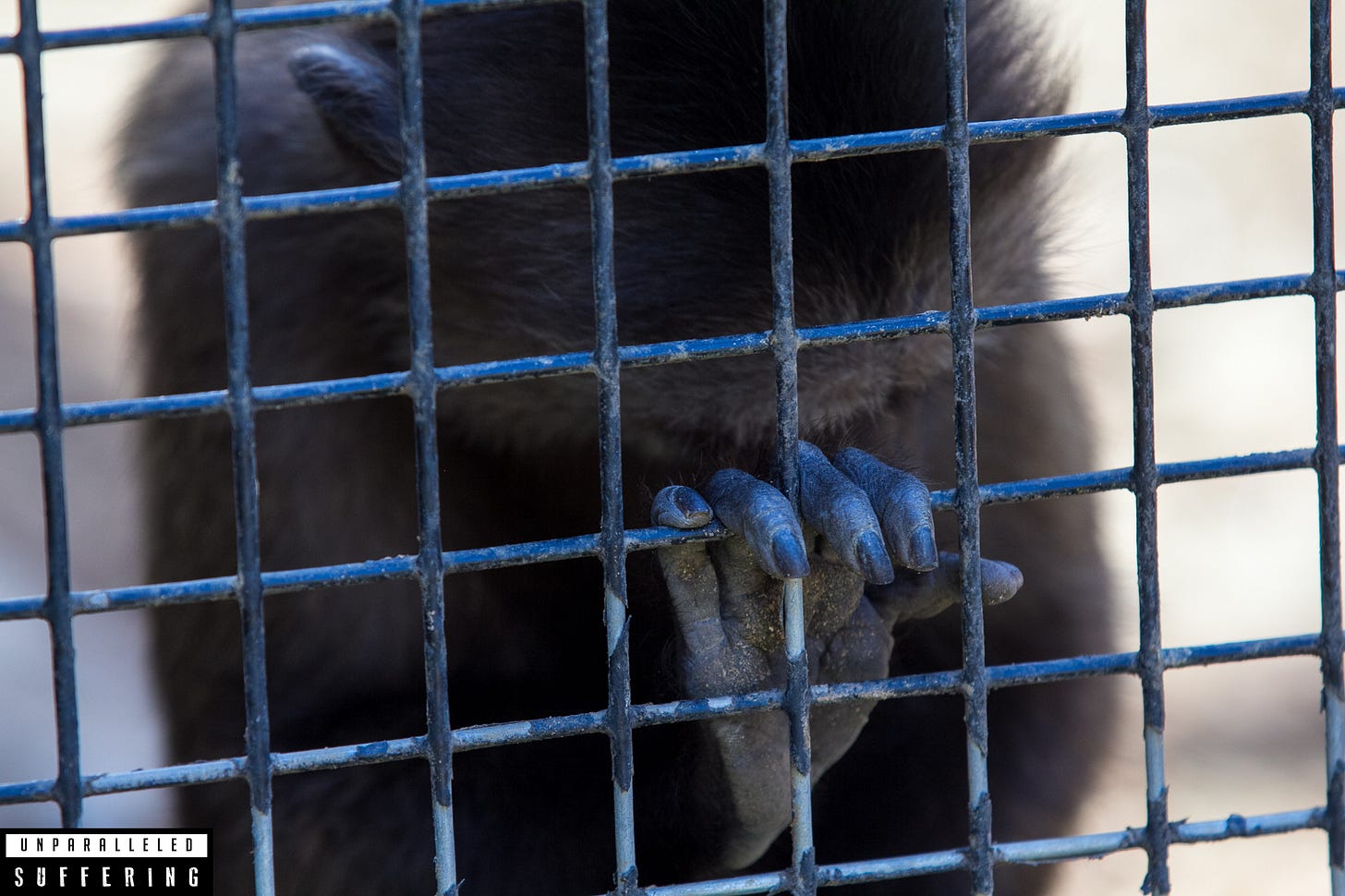

I’ve documented so many zoos and unfortunately I cannot remember off the top of my head where every zoo photo I have was taken. For the photos below, if I remember where the photo was captured I will share that detail with you, but if I don’t remember I will be skipping over that detail.
Trees are essential to the lives of primates, yet many zoos rob them of this basic aspect of nature—along with access to fresh air and being able to look at the sky other than through cage bars or windows (some primates have no ability to even see the outside). The zoo paints trees and foliage on the walls surrounding the window to the natural world. I think those painting jobs do as much for the animals on display as such paintings would do for any imprisoned human. The zoo enclosure would look worse without the painted trees and leaves on the wall, but the enclosure wouldn’t actually be any worse for those who must endure such a pitiful existence in there.
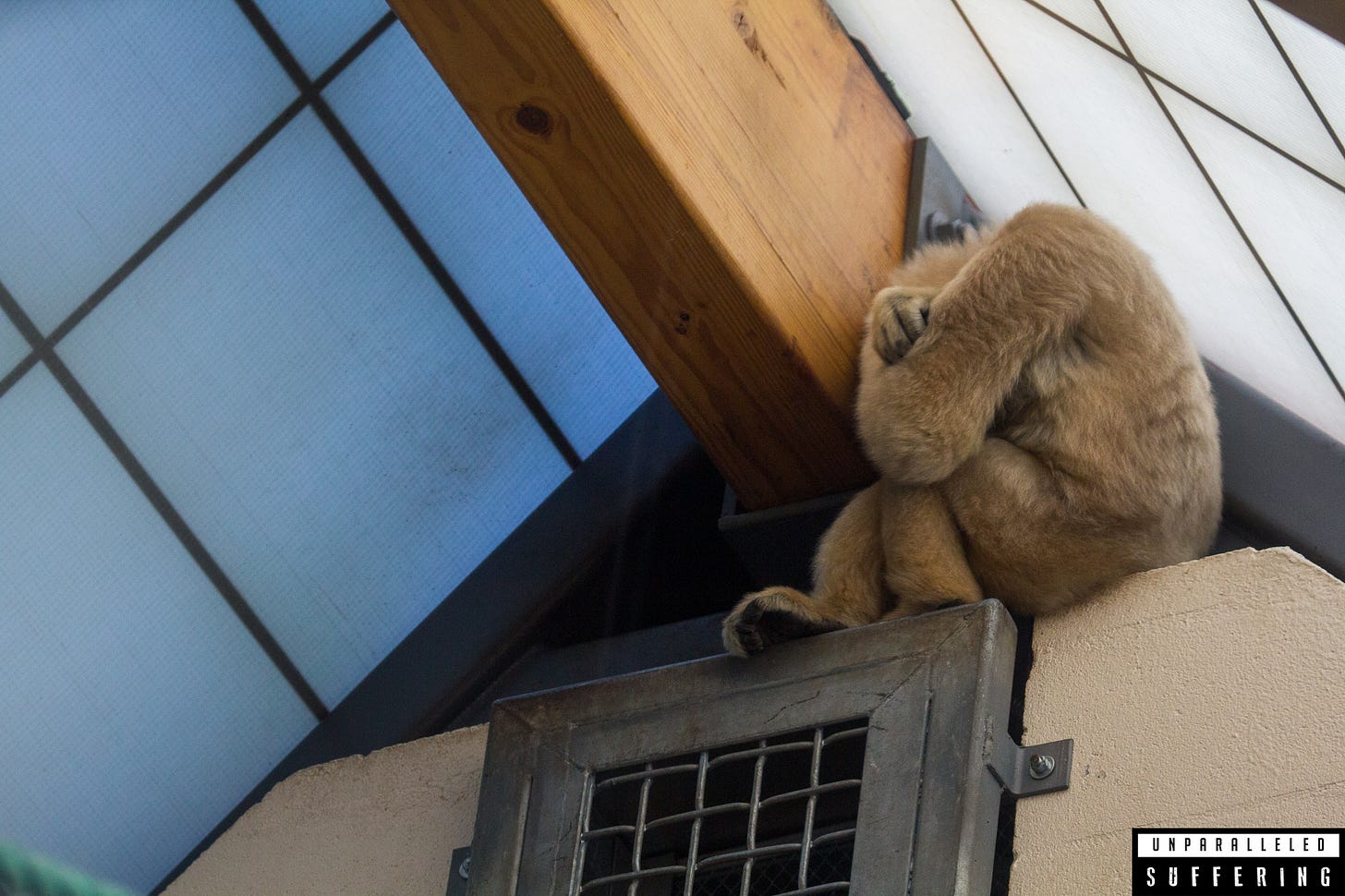
I can’t ever know exactly what’s going through the minds of other animals in zoos and anything else, but I can pick up on patterns and seemingly similar behaviors that I’d exhibit if I were in their situation—and then do my best to ascertain from there what’s actually taking place. With that being said, one thing I feel like I’ve noticed at lots of zoos is primates looking for a way to escape—to enter the unknown, which has to be far better than the degrading life they know all too well.
The first time I noticed a monkey seemingly trying to escape was when I went to my first zoo to document, the Austin Zoo. The individual in the photo above was looking around desperately with inquisitive eyes, in what appeared to be searching for a means to escape. I had questioned if this was what was really taking place, but seeing what appeared to be this exact same behavior over and over again has led me to conclude that I believe they were indeed trying to break free, just like many human prisoners would.
I’ve seen gorillas at several zoos throwing food up and eating it and then repeating this same disturbing behavior for at least the next 10-15 minutes that I’ve been able to endure standing around as a witness to their lived injustice. You can view a video I posted of this behavior here. When we put animals into situations that lead them to going mad highly abnormal behavior is likely to follow.
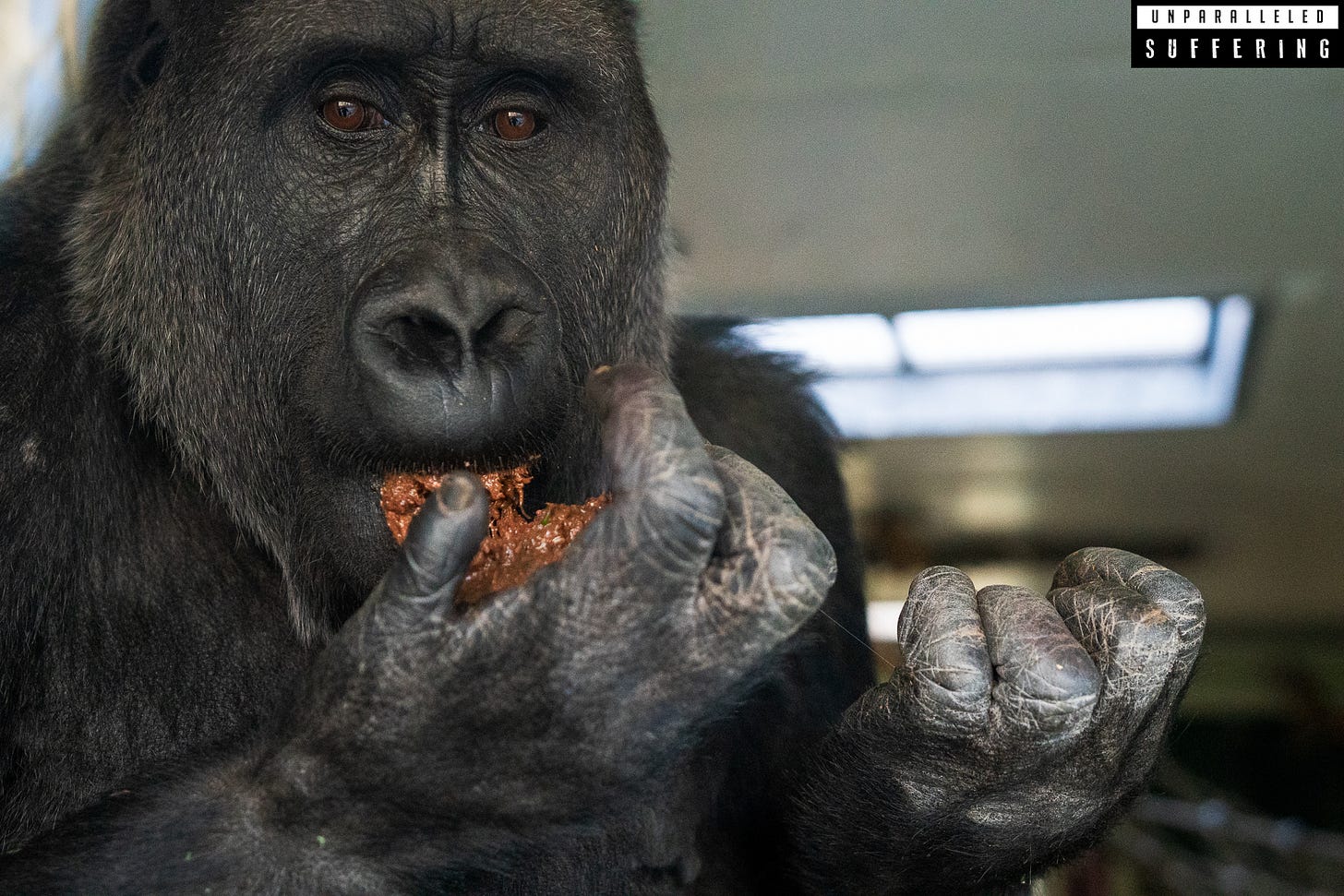
How dare we collect animals like they’re toys at will and put their miserable lives on display. It’s no wonder why privacy is non-existent for humans any longer, when we do something to other animals we usually end up doing the same thing or something similar to ourselves.

The irony on the above sign at a zoo I documented. We are indeed the only species with the power to care for all others, but is that what we’ve done with said power, or have we in the vast majority of circumstances acted out the complete opposite?
The Los Angeles Zoo has a short bio on their website for all of the gorillas they keep. They have several who were born at a zoo in the 80s and 90s, as well as some who are more recently bred such as a baby who was born at the LA Zoo in 2020. The gorilla in this photo I captured appears to be Rapunzel, a gorilla who was born at the Cincinnati Zoo in 1984 and was transferred to the Los Angeles Zoo in 1988. We share 98% of the same DNA with them, yet we still willfully put them into situations that we’d mostly never accept for our own species.
I documented what appeared to be a deeply dejected chimpanzee named Joey in 2019 at the Sacramento Zoo. Joey came from another facility and he had lived at the Sacramento Zoo since 1967. He passed away in 2021 when he was 57 years old. Chimpanzees share 99% of our same DNA, yet once again we do unimaginable things to them that would be considered unacceptable for us to do to humans. In an article about Joey’s death the Sacramento Zoo states that the illegal pet trade of chimpanzees is one of the biggest threats to their survival. However, keeping animals in zoos conditions people to believe that we can collect animals as we please, no matter their needs, and it helps fuel the rise of the legal and illegal pet trade. I’ve overheard countless people, especially children, saying something along the lines of “I want one of those” when they look at animals in zoos.
In the short clip below a child who I overheard at the San Antonio Zoo told his mom that he wants to own a zoo one day and have all the animals.
I recently read the following quote that I fully agree with by Dan Mackler on the homepage of his website, www.wildtruth.net:
I view the norm in our culture as being highly traumatized and I view the average, and even above-average, childhood as being extremely traumatic – and the average parent as lacking both awareness of this and deep empathy for the child.
It’s scary how much awareness humans lack. When I see parents taking their children around the zoo I feel like I’m looking at a child who has so much growing to do, being a complete idiot and trying to raise another child. The things parents normalize to their children at such a young age, such as keeping animals in nearly unlivable conditions for our own amusement, breaks my heart.

I often wonder what happens with the people who I overhear commenting that so and so “looks sad” or that such and such “is sad” when I’m at zoos. Do these people typically move on and try to forget about what they observed and do their best to enjoy the rest of their time at the zoo? Or do they decide to stop attending zoos? As I near the end of this piece and I ponder these questions I’ve decided that when I’m able to in the future I’m going to just ask these people if they are going to keep attending zoos or not. I’ll report back to you with what I find out.





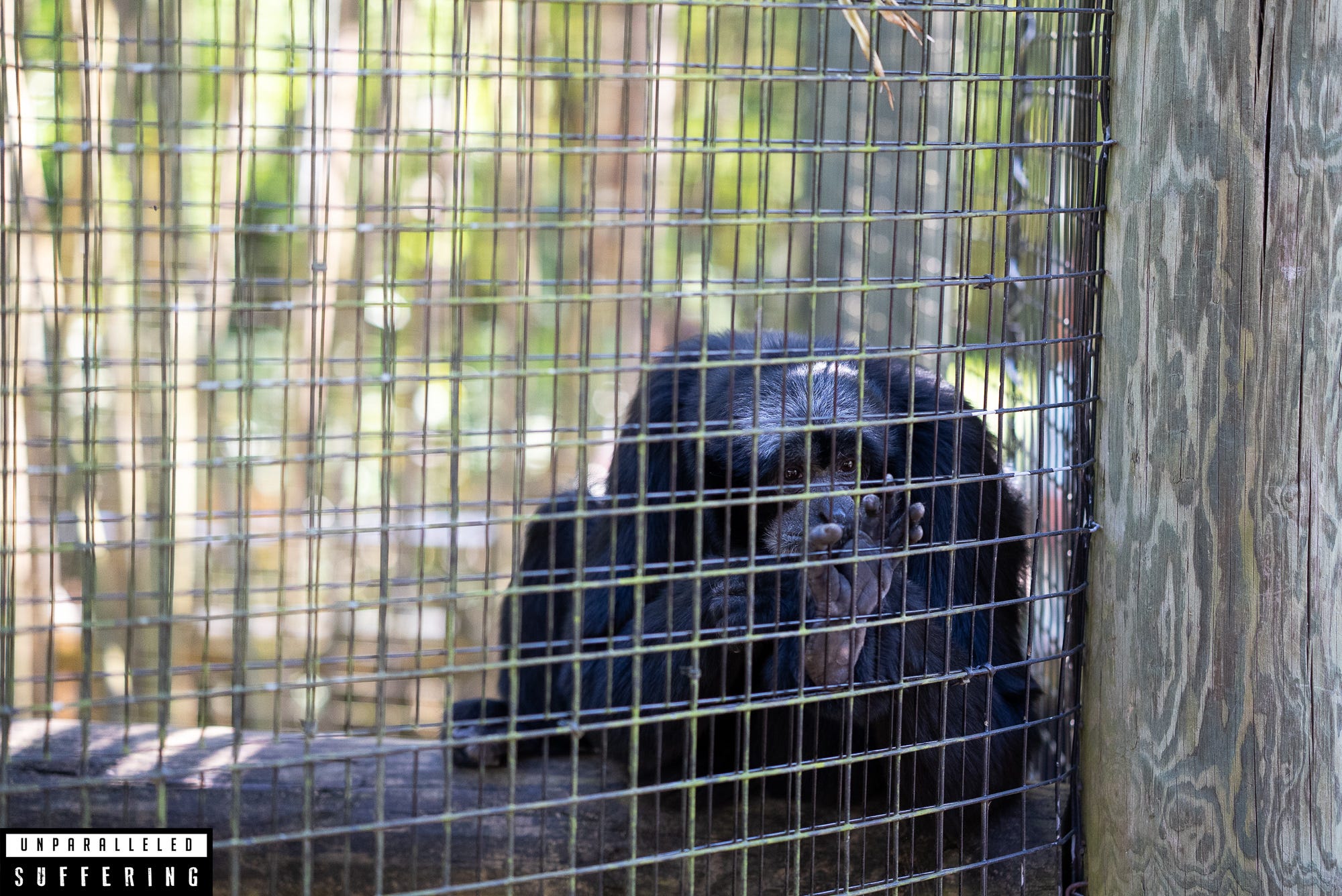
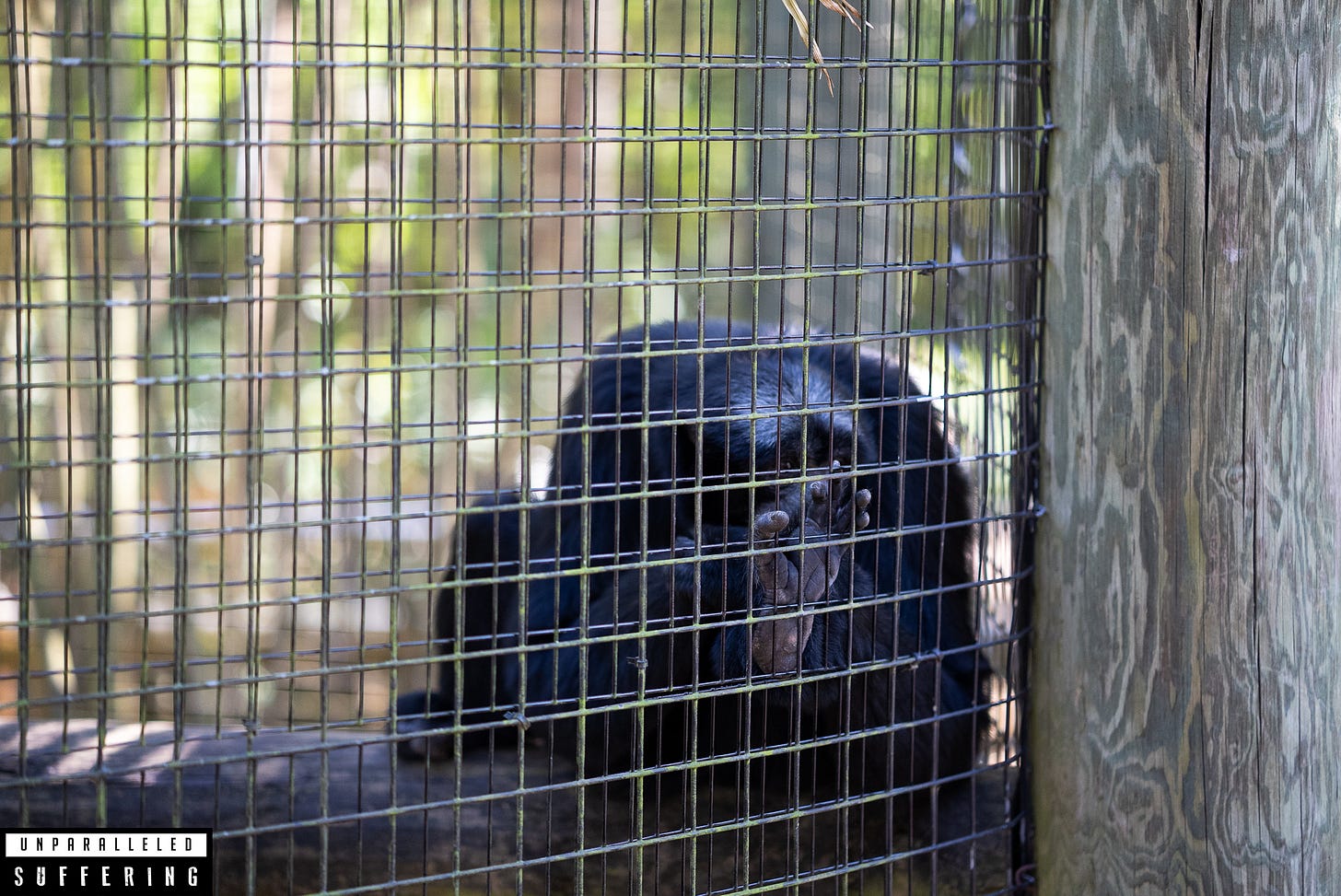
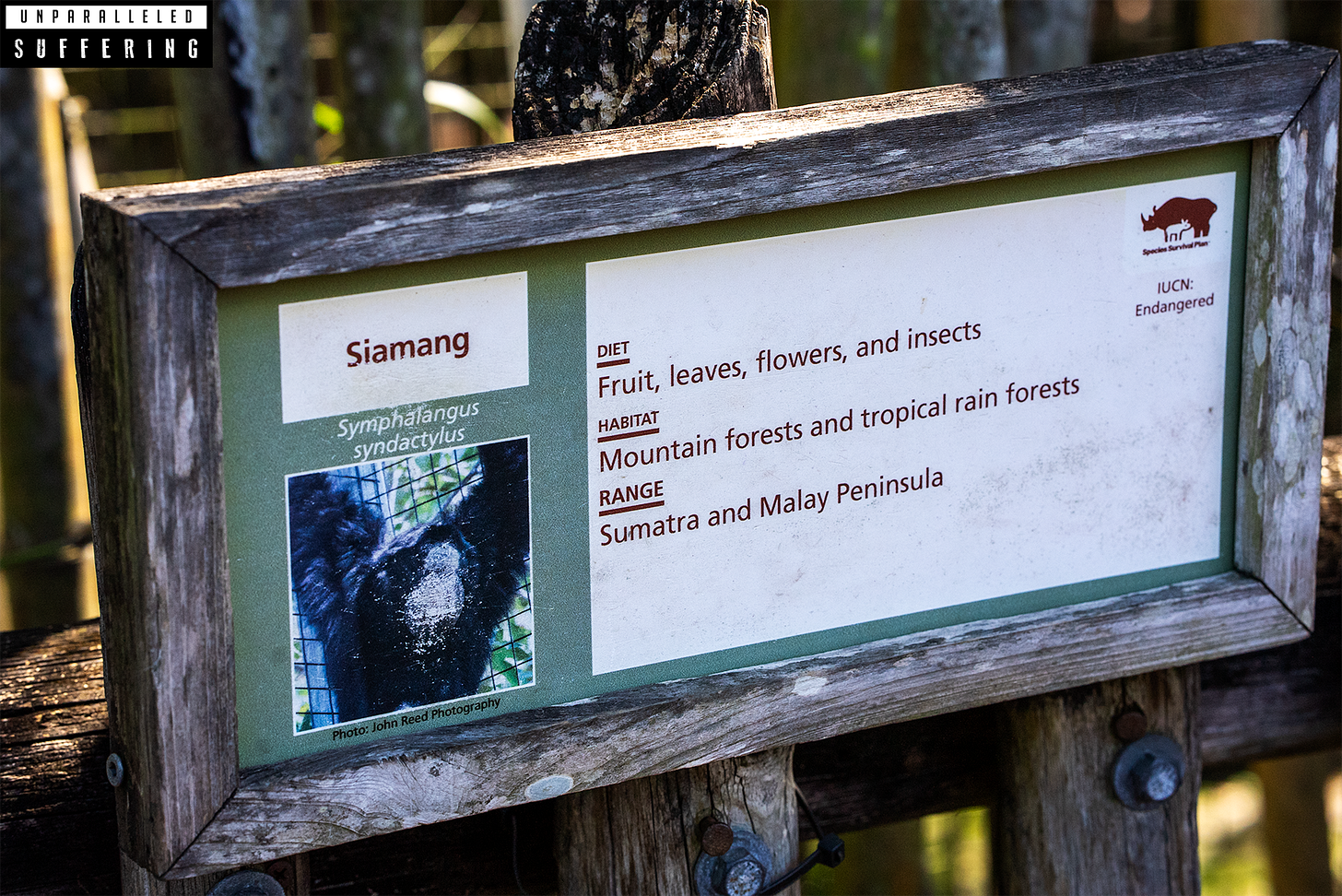

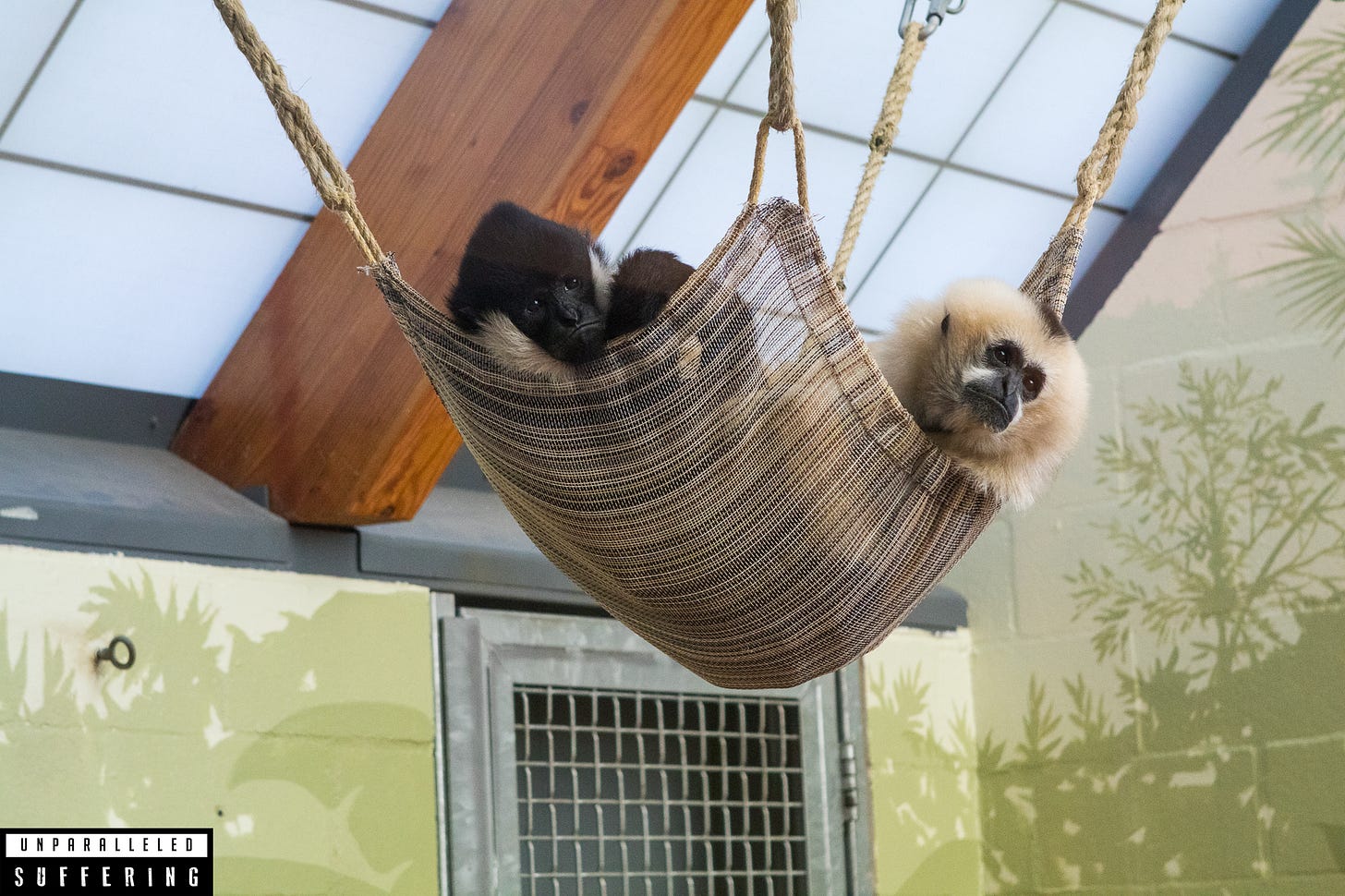
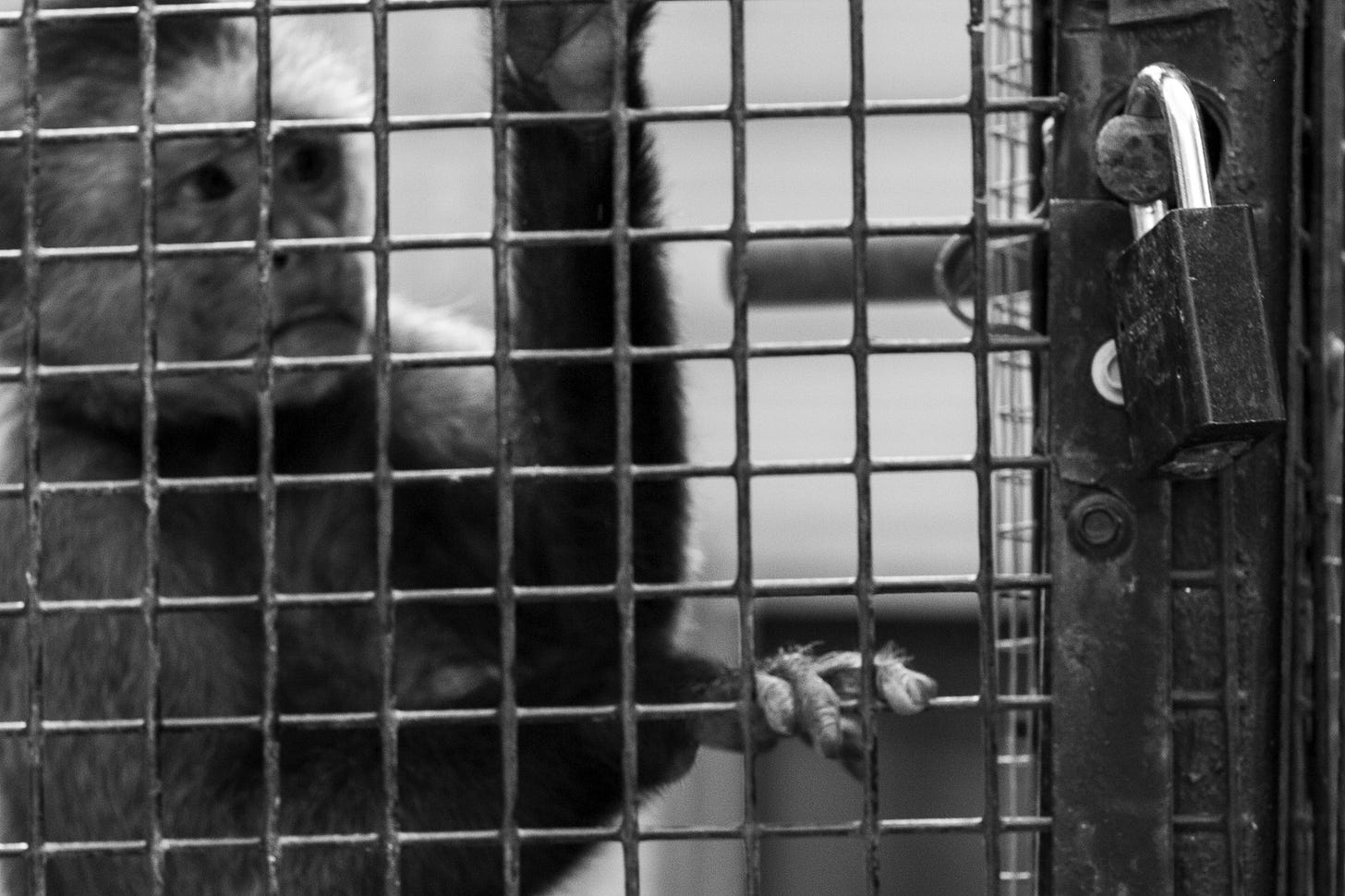
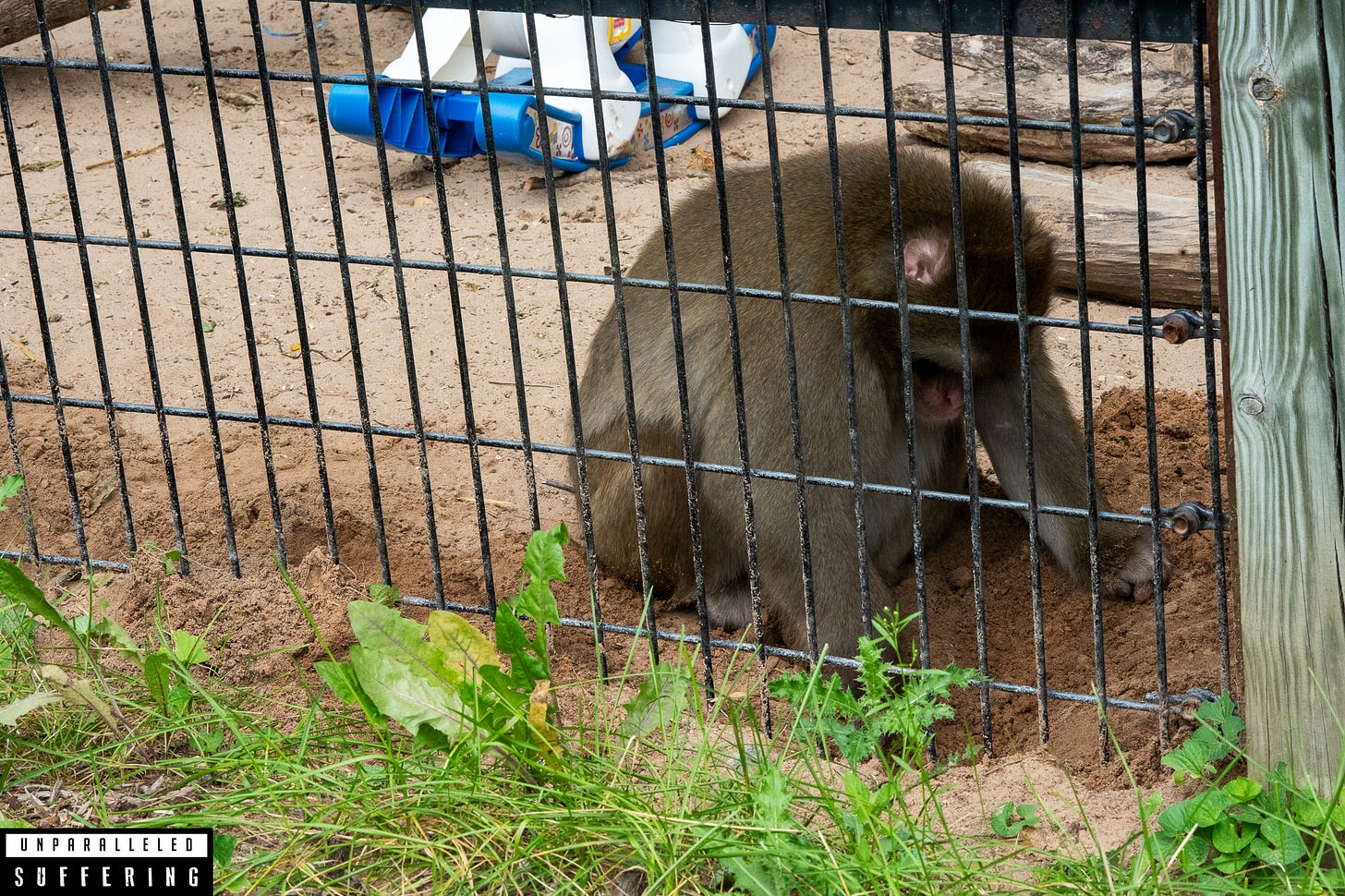

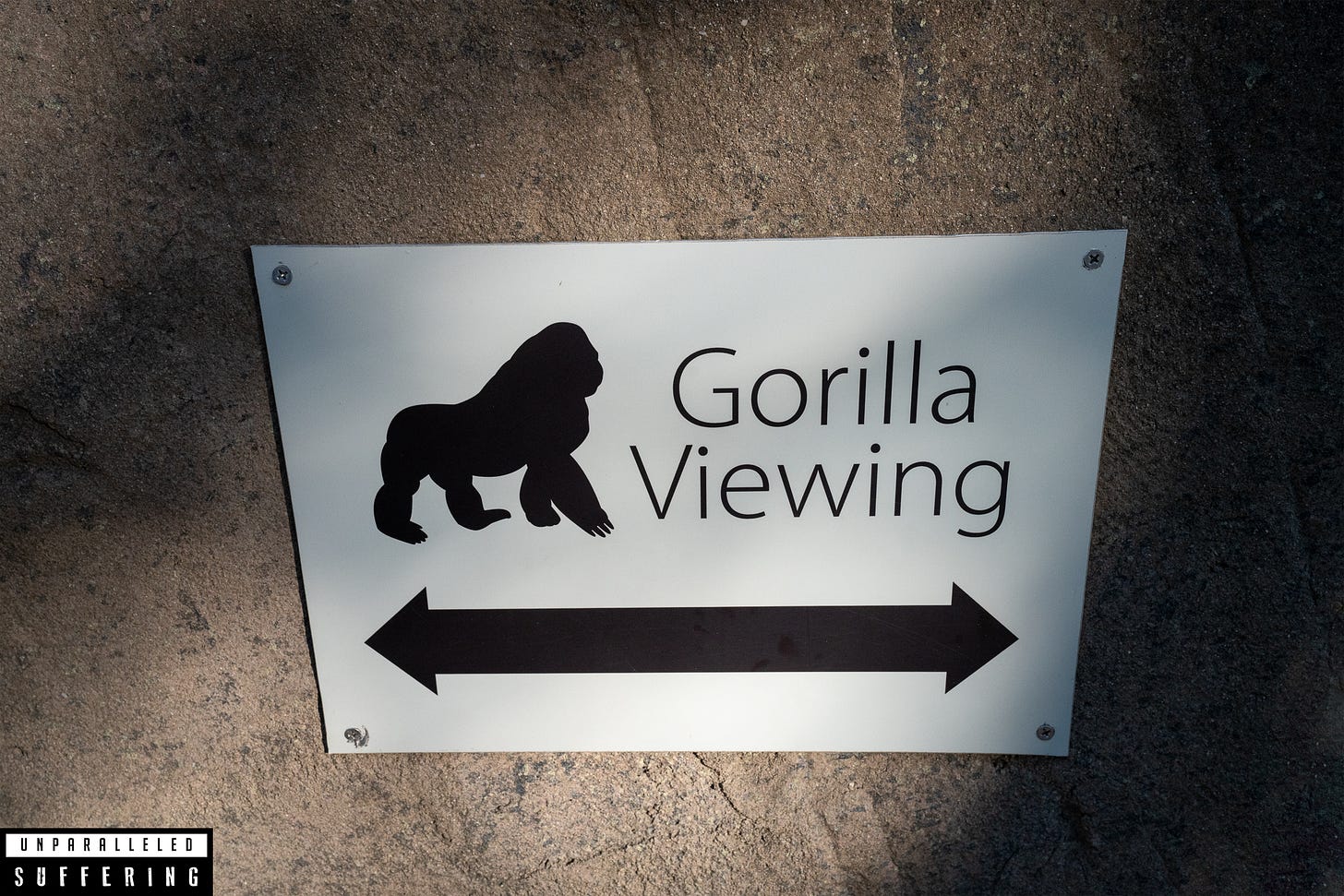
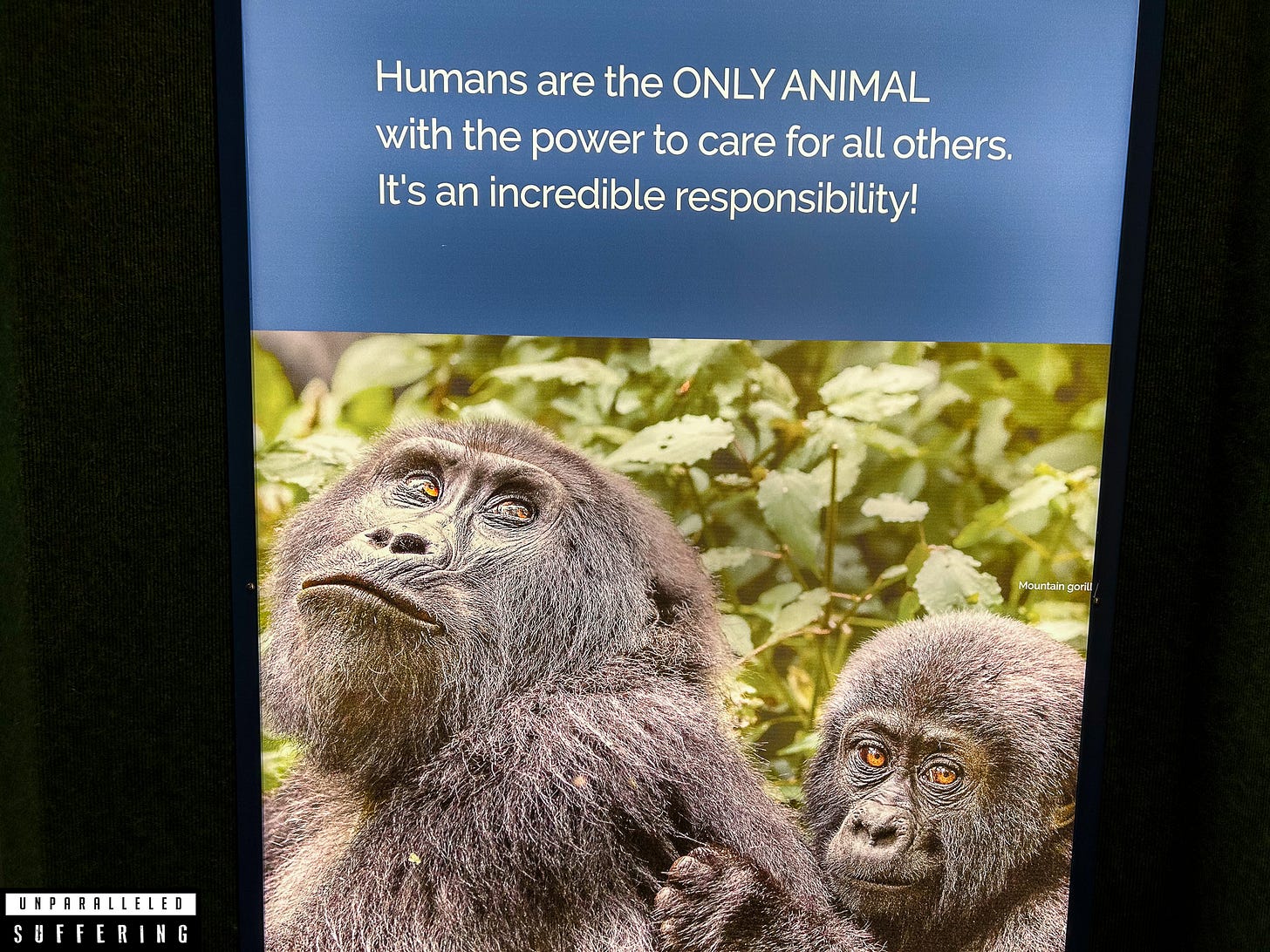



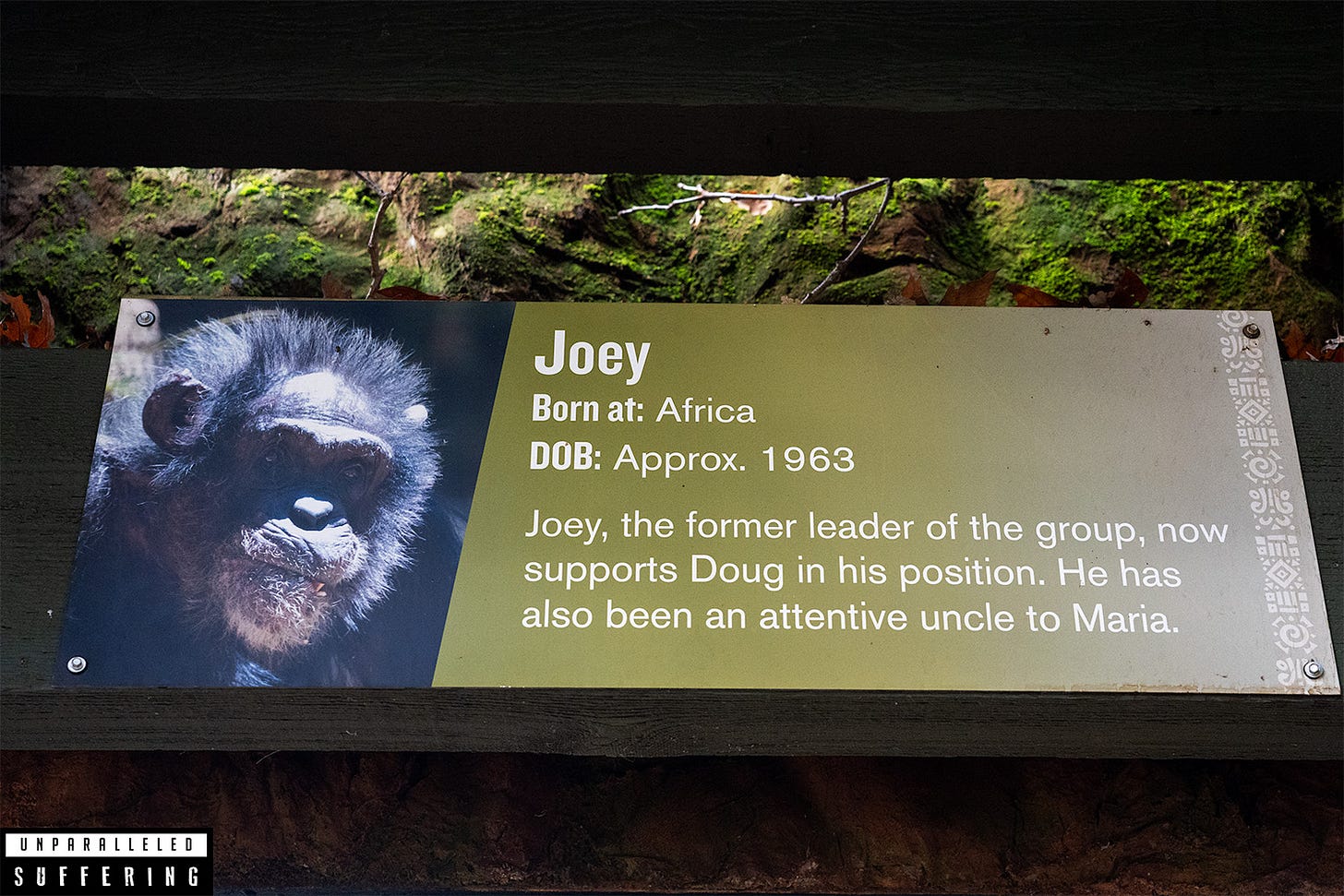
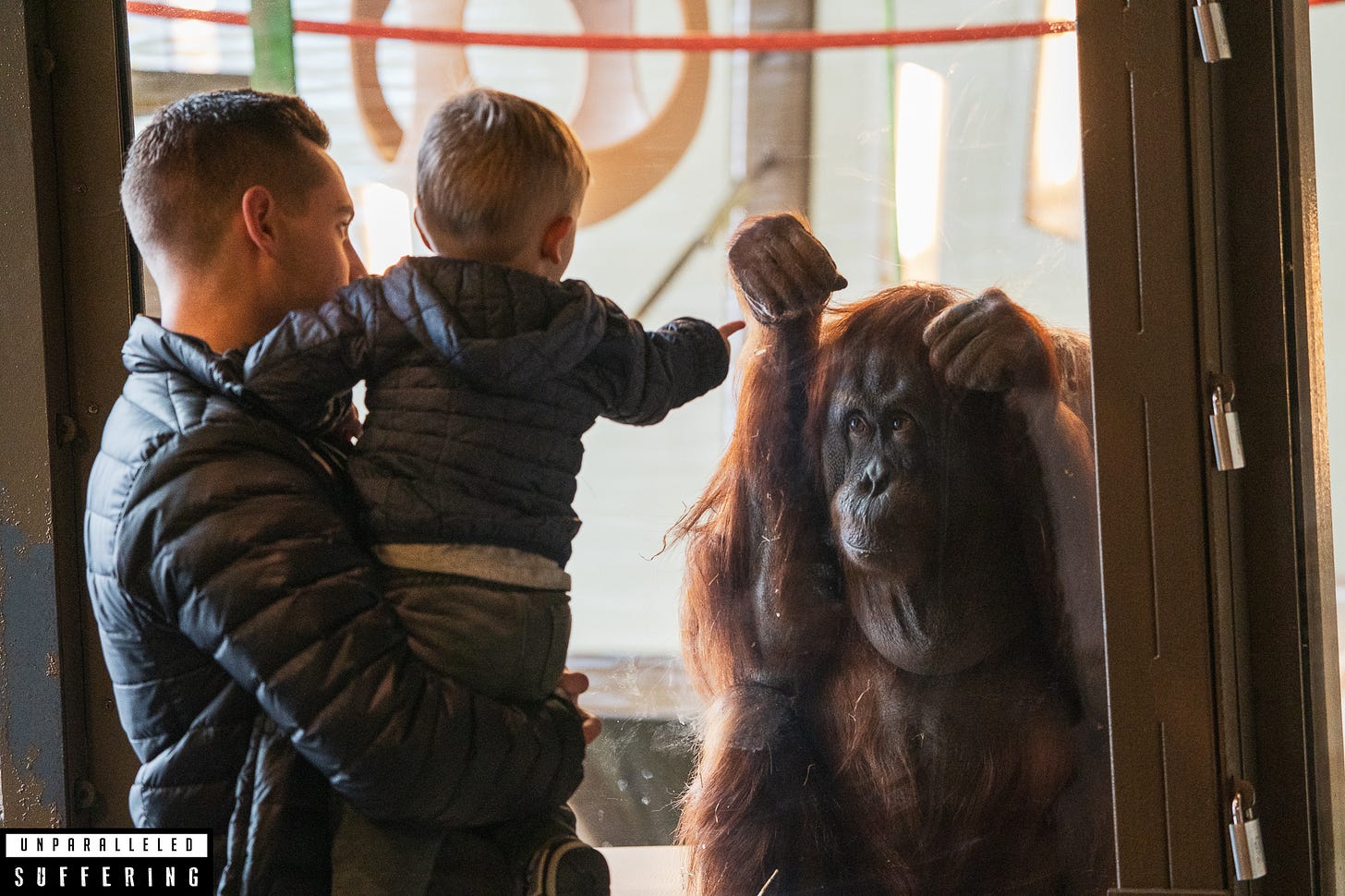
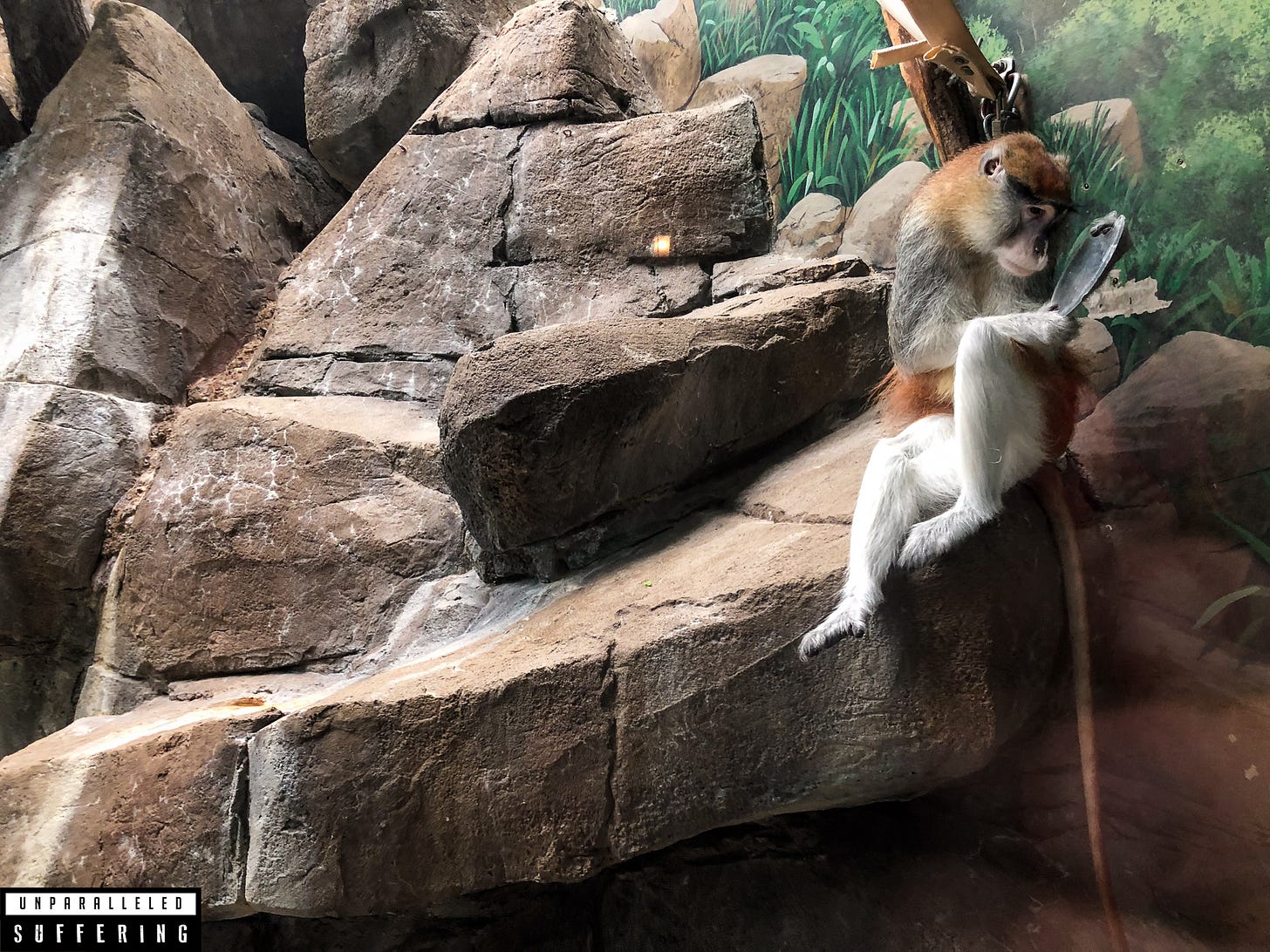

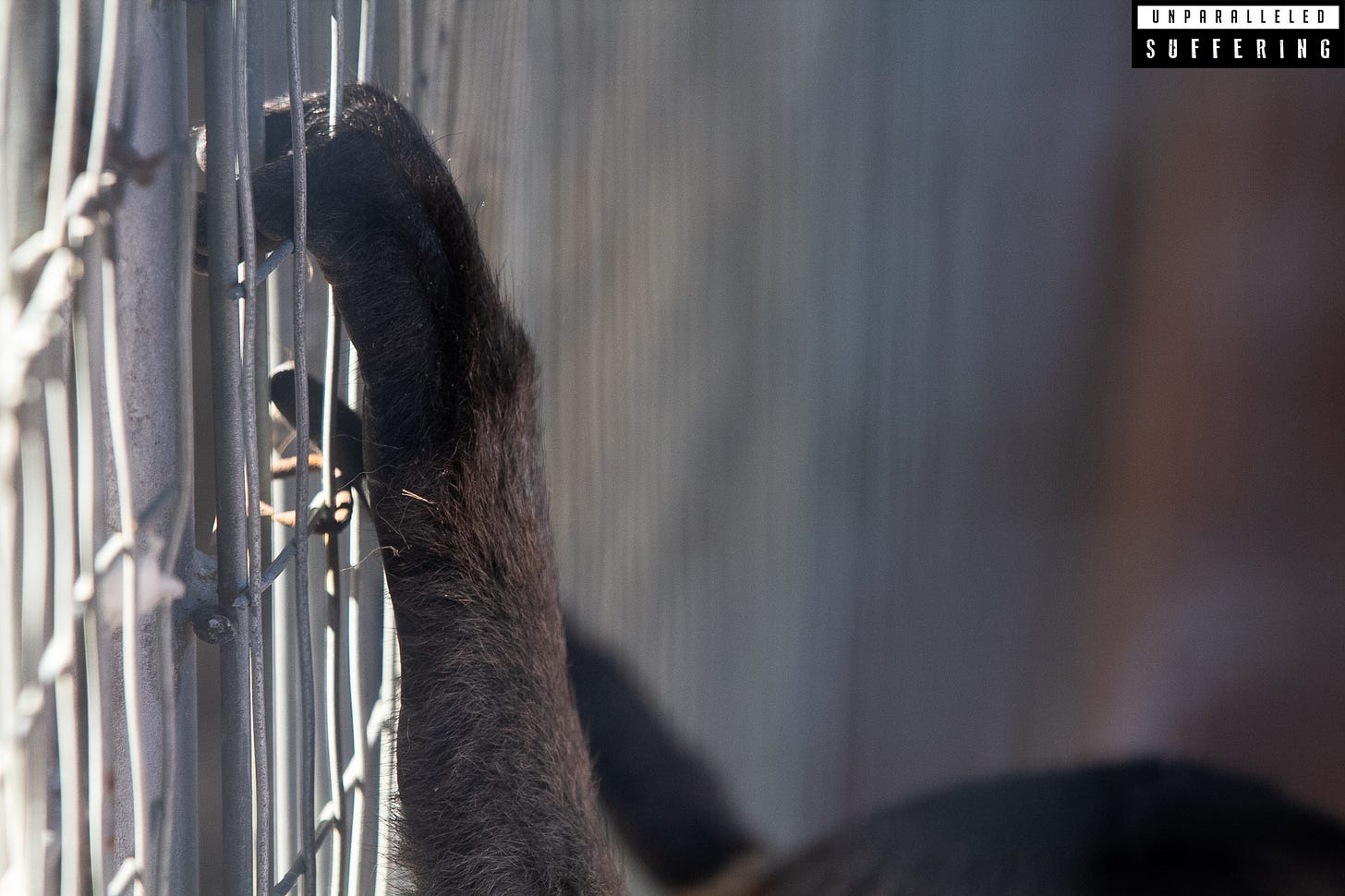
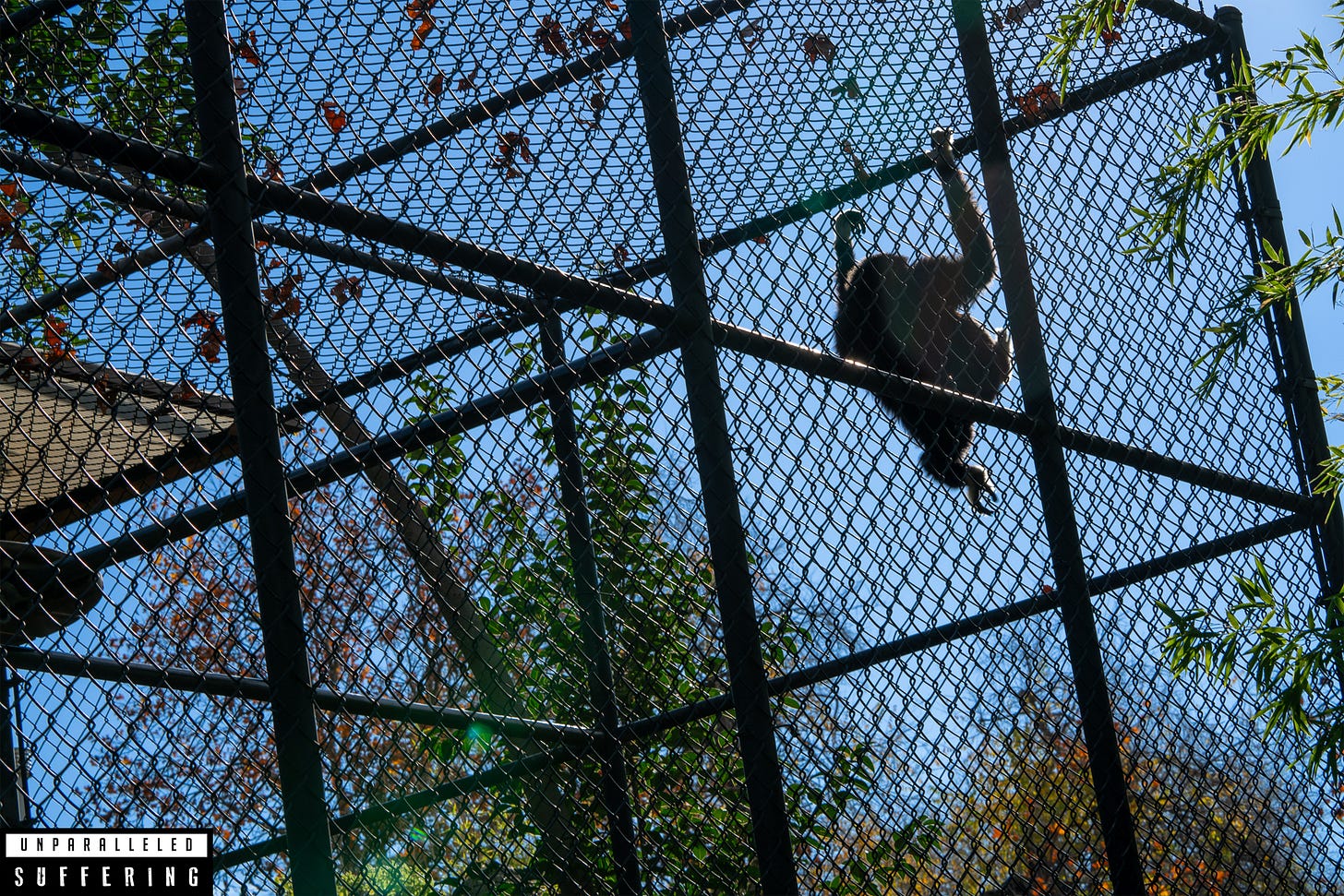
We have a worldwide epidemic of unparalleled suffering. That suffering grievously affects us humans -- and "the other animals."
I invite you to check the website of the GoldenRuleism Team: www.goldenruleismcan.org
GoldenRuleism is an overarching ethic with two elegantly simple principal principles:
"Do for all others, both directly and indirectly, what you would want done for you. Don't do to any others, either directly or indirectly, what you wouldn't want done to you."
By sharing GoldenRuleism as our common bond, we'll more quickly and effectively "Move the Needle of Humanity Towards Humane-ity."
GoldenRuleism is an overarching ethic whose time has come. Let's put it to work together!
"The wild, cruel beast is not behind the bars of the cage. He is in front of it."- Axel Munthe